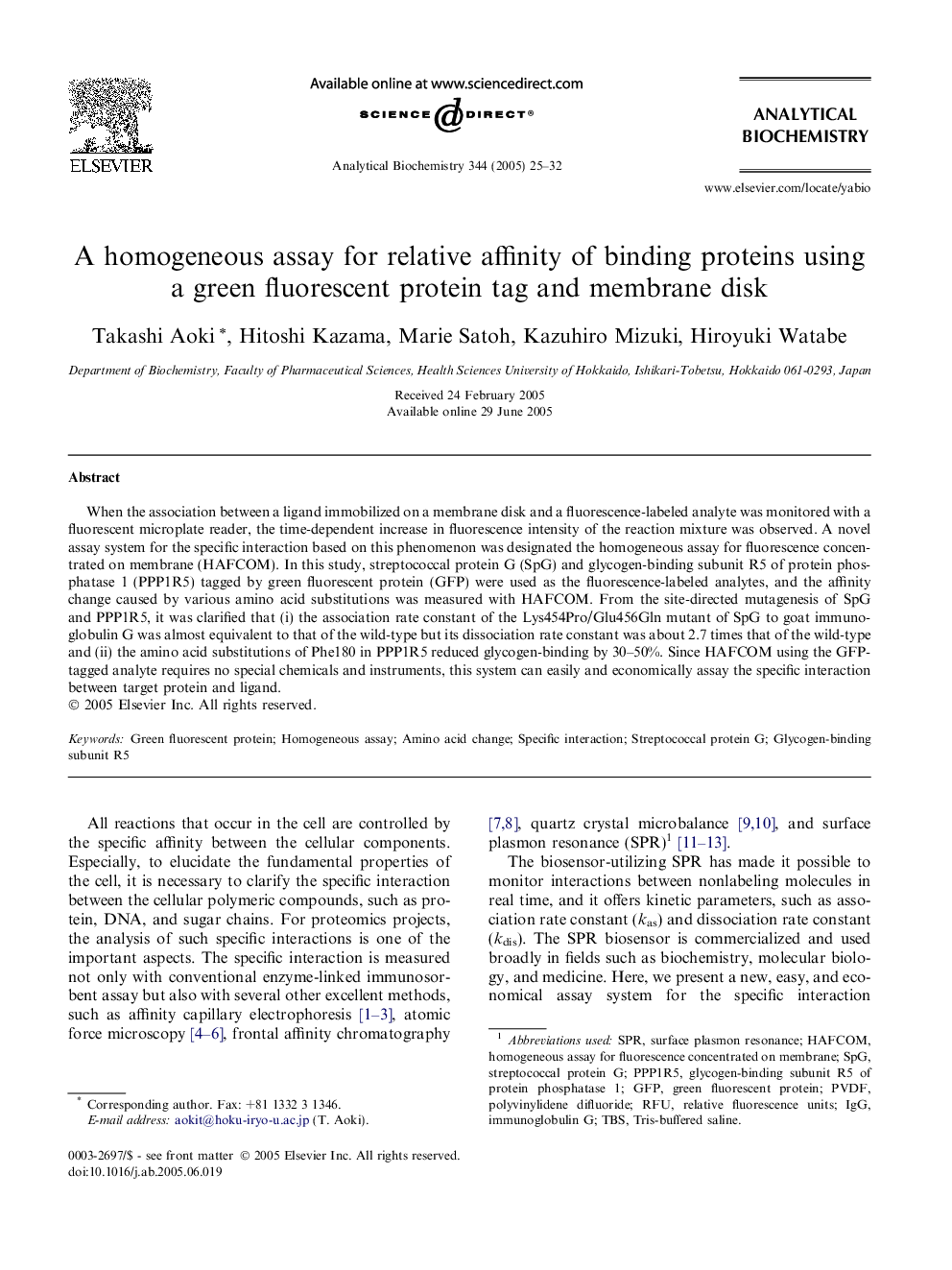| Article ID | Journal | Published Year | Pages | File Type |
|---|---|---|---|---|
| 10533093 | Analytical Biochemistry | 2005 | 8 Pages |
Abstract
When the association between a ligand immobilized on a membrane disk and a fluorescence-labeled analyte was monitored with a fluorescent microplate reader, the time-dependent increase in fluorescence intensity of the reaction mixture was observed. A novel assay system for the specific interaction based on this phenomenon was designated the homogeneous assay for fluorescence concentrated on membrane (HAFCOM). In this study, streptococcal protein G (SpG) and glycogen-binding subunit R5 of protein phosphatase 1 (PPP1R5) tagged by green fluorescent protein (GFP) were used as the fluorescence-labeled analytes, and the affinity change caused by various amino acid substitutions was measured with HAFCOM. From the site-directed mutagenesis of SpG and PPP1R5, it was clarified that (i) the association rate constant of the Lys454Pro/Glu456Gln mutant of SpG to goat immunoglobulin G was almost equivalent to that of the wild-type but its dissociation rate constant was about 2.7 times that of the wild-type and (ii) the amino acid substitutions of Phe180 in PPP1R5 reduced glycogen-binding by 30-50%. Since HAFCOM using the GFP-tagged analyte requires no special chemicals and instruments, this system can easily and economically assay the specific interaction between target protein and ligand.
Related Topics
Physical Sciences and Engineering
Chemistry
Analytical Chemistry
Authors
Takashi Aoki, Hitoshi Kazama, Marie Satoh, Kazuhiro Mizuki, Hiroyuki Watabe,
